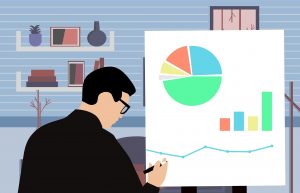For data analyst freelance services contact me [email protected]
Introduction – Customer Churn
Customer churn is a painful issue for companies because acquiring new customers requires expensive marketing efforts. Accurate identification of churned customers, while distinguishing between inactive customers and churned customers, can help preserve customers through the Customer Success department and by analyzing the characteristics of customers that churn can help to identify what the company can do to prevent churn of active customers.
Active customers who churned compared to inactive customers
There are two definitions of customers who stopped using the product:
An active customer who churned is a customer who used the product several times after registration but at a certain point stopped using the product.
An inactive customer is a customer who registered for the product (or downloaded the app), used it once or a few times, realized the product is not suitable for them, and stopped using it.
The psychological perception of the two types of churned customers is very different because an active user who churned did so because of something that bothered them about the product, and therefore the retention efforts will be different than a user who used it once and decided the product is not suitable for them.
An operational definition of active customers
What is the number of times a customer needs to use a product in order to be considered an active customer?
There is no one definitive answer to this question. Each company, depending on the environment in which its product operates, can assess what is the quantity of product usage that defines an active customer. Analytical analysis performed by a data analyst can assist in this task.
The analyst can create histograms of the quantity of customer usage of the product in order to determine the threshold. For example, if it is found that in the first month of product use, 60% of customers used the product more than 3 times, it is likely that the appropriate threshold for defining an active customer is 3 uses since registration, and 40% of customers who have not reached this threshold will be considered inactive customers.
Inactive customer analysis.
Although the goal of the post is to identify active customers who have churned, a data analyst can also help managers to reduce the number of inactive customers through analysis of product and marketing data.
In the product field, the analyst can examine whether there are problems with the user interface (UI) that caused customers to stop using the product after minimal use.
In the marketing field, the analyst can examine whether there are campaigns that bring in customers who become inactive. Campaigns that bring customers who do not become active can affect the return on investment (ROI) of the campaigns. To address this phenomenon, the analyst can recommend actions such as A/B testing and campaign improvement so that active customers can be created in the future.
Analytical methods for identifying customer churn
After defining the active customers who have churned, we need to identify the churned customers among them. There are two ways to do this. Identifying churn based on a fixed time window (the naive way) and identifying churn based on the customer personal usage characteristics.
Identifying churn based on a fixed time window – The naive approach
In this method, we checked which customer did not use the product in a specific time period. For example, active customers who have not used the product in the last month will be marked as churned customers. The churn rate in this case will be the number of identified churned customers within the time window we defined out of the total number of active customers within that time window.
The advantages and disadvantages of identifying churn based on a fixed time window
The advantage of identifying churn based on time windows is the simplicity of use and ease of understanding the method. It is relatively easy to calculate the metrics involved in the churn process and to explain them to product managers and the management team.
The disadvantage of this method is ignoring the frequency of customer use. For example, in a supermarket, there is a customer who makes a purchase once a month and a customer who makes a purchase once a week. If, for example, a time window of one month is set, we may identify the customer who makes a purchase once a month as churn if they are delayed by a few days in their regular monthly purchase.
In addition, using a constant time frame of month will not allow us to identify on time customers that buy on a weekly basis. These customers may go to another store during the month and our retention efforts might not work.
Churn identification based on personal frequency usage
In the previous method, we worked with a fixed time window for all customers, and we found that we may miss identification of churn customers. In the personal method, we calculate abandonment for each customer based on their frequency of use characteristics.
Each customer has different characteristics and habits of product usage, so we cannot treat all customers the same when we want to examine whether they are in a state of chun. Additionally, personal identification of customer churn allows us to perform simple retention efforts on the customer (such as sending a reminder to come back and use the product) and thus “save” them from abandonment and bring them back to become again active customer.
In order to calculate churn on a personal level, we consider for each customer their average or median usage frequency and the standard deviation of that frequency. Customers are defined as churned customers if they have stopped using the product according to their average frequency.
For example, if a customer usually uses the product once a week and a week has passed since it’s last use, there is a good chance that the customer has abandoned the product.
To determine if a customer has abandoned the product, we set a time window that is the average frequency of use plus a number of standard deviations that we decide upon.
The reason for using the standard deviation is that humans are unpredictable creatures and are not consistent. The standard deviation of the customer’s frequency widens the time window during which the customer is not considered defined as churn and allows us to deal with a situation in which the customer has slightly changed its purchasing habits.
Each company should determine the number of standard deviations based on their customer base, as each product is different and operates in a different business environment. Therefore, it is desirable to perform churn analysis several times and each time to adjust the number of standard deviations above the average, perform sanity checks for customers marked as churn, and ensure that the number of standard deviations we have determined can actually identify churn customers effectively.
Advantages and disadvantages of personal frequency Churn identification
The advantage of the method is in more accurate identification of churn customers, and faster identification when the customer abandoned the product.
The disadvantage of the method is its complexity. It is more complex to build a data model that computes purchase frequency for churn calculation compared to the naive method. Additionally, it should also be acknowledged that despite the efforts of personal churn calculations for each customer, there is still a chance that the attribution of churn to a customer might be incorrect because people are unpredictable creatures that are always subject to change.
User retention and churn prevention
Analysis of churn characteristics
Once we have defined who is a churned customer, we can analyze the characteristics and segments in which the churn rate is higher, and recommend to managers how to try to reduce churn.
For example, if the analysis shows that the churn rate of customers using the Android app is higher than that of customers using the iPhone, it would be worthwhile to investigate what factors are affecting this. The analyst’s recommendation may be to improve the user experience of the Android app.
AutoML models can also be used to identify unique characteristics that characterize churner customers.
Churn prediction
Our definition of churned customers can be used by data science professionals in developing churn prediction models. These models can identify customers who are likely to churn and prompt the Customer Success team to take retention efforts for these customers.
This article was written by Yuval Marnin.
If you need to analyse your customers and prevent them from churn you may contact at: [email protected]
You may also hire me through upwork platform on that link:
https://www.upwork.com/freelancers/~018940225ce48244f0\
Further reading
The advantage of hiring a freelance data analyst.
What does a data analyst is doing and how it can help your company.





